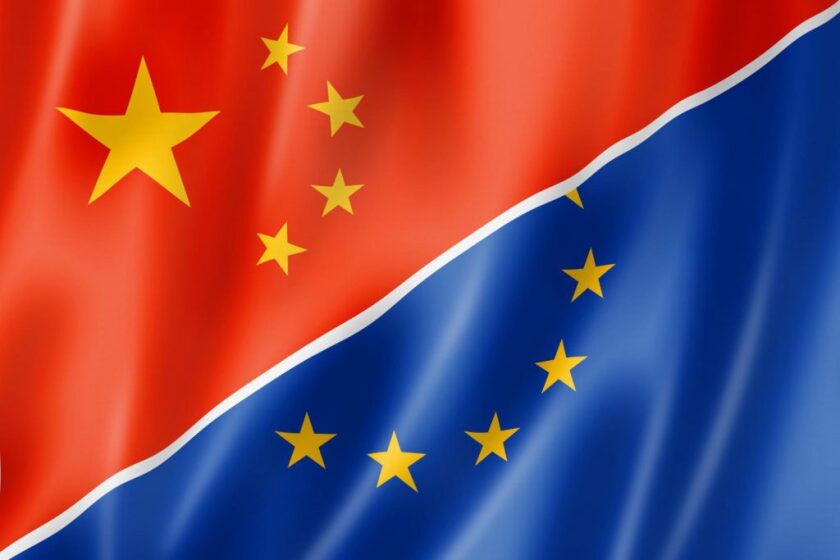The EU-China Comprehensive Agreement on Investment (CAI) aims to achieve a number of objectives for EU investors in China. Objectives include improving transparency, leveling the playing field, and improving market access commitments. Lawyers, academia and economists believe that the CAI is a step forward in economic and trade relations between the China and the EU, but factors such as enforcement and dispute resolution mechanisms will determine whether it can achieve its purpose.
What are the key elements of the CAI?
The CAI creates a better market access through the opening up of various sectors and fairer competition for businesses based on compliance with environmental and social standards.
For instance, China is committed to guaranteeing a higher level of access for manufacturing, which makes up half of total EU investment. This includes 28% for the automotive sector and 22% for basic materials.
Requirements for joint ventures are lifted in financial services and will be phased out in automotive production.
In terms of competition, China is committed to guaranteeing fair treatment for EU companies by not discriminating against European companies. For example, China has pledged to be more transparent in granting public subsidies to state-owned enterprises (SOEs).
The CAI also lays out clear rules against forced technology transfer, such as requirements to transfer technology to a joint venture partner, as well as prohibitions to interfere in contractual freedom in technology licensing.
How much of a difference will the CAI be to EU businesses?
According to Julian Chaisse, professor of law at City University of Hong Kong and president of the Asia Pacific FDI Network, the CAI is more meaningful to European companies than any Chinese domestic rules.
“Domestic Chinese rules can be done and undone at will by China, whereas the CAI crystalises the reforms in international rules that can only be modified after EU approval,” he said.
Max Zenglein, chief economist at Mercator Institute for China Studies in Berlin, said that many of the items in the CAI have been promised for a long time and already covered by existing initiatives, but are now formalised.
For example, China has agreed to remove or phase out joint venture requirements for new energy vehicle production but this is already in line with China’s auto industry policy that will be enforced in 2022.
He believes that the biggest achievement, in terms of competing with Chinese SOEs, is the transparency issue on granting subsidies. However, he is concerned that it misses current developments where government involvement reaches beyond SOEs into the private sector.
“This means that the achievements made in the CAI may be less effective in this new operating environment,” he said.
François Renard, partner at Allen & Overy, said that it is interesting to see the inclusion of transparency of subsidies in the CAI. This is an important element that is on the EU’s agenda, as evidenced by the European Commission’s adoption a white paper dealing with the distortive effects caused by foreign subsidies in June 2020. The aim of the white paper is to enable the EU to investigate companies operating in the EU that receive foreign subsidies.
See also: PRIMER: China’s new foreign investment law
What stage is the CAI at?
China and the EU concluded in principle the negotiations on the CAI on December 30, but the final text of the agreement still needs to be reviewed before it can be submitted for approval by the EU Council and the European Parliament.
What are the areas of contention that remain?
One of the main areas of contention that remain is dispute settlement.
“It is hugely important, a weak mechanism would make the whole agreement worthless,” said Chaisse. “Conversely, an effective and robust dispute settlement between China and EU will be hard to reach as there is no consensus as for what it should be for now, despite seven years of previous negotiations.”
One option is to maintain the investor-state dispute settlement (ISDS) mechanism that is in many investment treaties. Under the ISDS mechanism, multinational corporations are allowed to sue governments before international arbitration tribunals directly.
Another option, one that the European Commission has been advocating for, is to move to an international investment court system (ICS). This feature is in the EU-Canada Comprehensive Trade Agreement and the EU-Vietnam Free Trade Agreement.
While China’s attitude towards the ICS is not definitive, what will be important to keep in mind is what is happening at the UN where ISDS reform is also taking place. The UN Commission on International Trade Law (UNCITRAL) has organised a working group to consider the options.
“It’s very likely that China will try to delay the CAI negotiations on this matter to see what UNCITRAL decides to do,” said Chaisse.
According to Zenglein, the CAI is a liberalisation first step and marginal improvements are being made but there are still many open areas and not all the EU member states are on the same page. “The biggest threat to the CAI is the political fallout within Europe,” he said.
Germany has pressed forward with the CAI and its companies appear to have the biggest economic interest in the CAI, but other countries believe the agreement was rushed.
For instance, officials from countries such as Italy and Poland have complained that Germany has pushed through the CAI without addressing concerns such as labour rights.
Renard said that there are many areas in the CAI which still require further negotiation, and if the final text of the CAI is ever to be groundbreaking, its terms will need to be as clear and specific as possible.
One of the biggest problems is that the CAI lacks a clear enforcement mechanism.
“It lacks teeth and it’s highly problematic if there is disagreement and both sides just end up talking about the disagreement,” said Zenglein. “The concessions China has made are limited for the most part, and are in areas where they overlap with economic policy.”
See also: PRIMER: China's new Export Control Law
How does the CAI compare with the China-US trade deal phase one agreement?
Speaking at a webinar on the CAI, Wendy Cutler, vice president and managing director at the Asia Society Policy Institute, said: “Both agreements are the most significant that the US and EU have concluded with China since the WTO trade accessions, but both sides realise that the agreements are not perfect and there is work to be done.”
Compared with the phase one agreement, Cutler said that the CAI is more of a reciprocal agreement, where every provision includes the phrasing of “each party shall” whereas the phase one agreement is more focused on “China shall” and the US occasionally “affirms”.
While provisions on financial services and technology transfer are similar between the two agreements, the phase one agreement has provisions on currency, intellectual property rights, agriculture purchasing commitments that are not found in the CAI. On the other hand, the CAI addresses issues on subsidies, labour and environment.
Sabine Weyand, director general for trade, European Commission, who was involved with the negotiations on CAI, said in the same webinar, that through the CAI, the EU is recommitting its openness to China.
“Through the CAI, the EU is trying to engage with China on the issue of levelled playing field, which is something that China has not yet want to engage at the WTO or any other partner before,” said Weyand. “You’ll be able to extract more from a partner if you’re also willing to commit yourself with something reciprocal.”
She said that China has made a big step towards engagement with the CAI and this needs to be used as a springboard to reinvigorate the discussions in the WTO. “The CAI will be a building block for a rules-based regulation of globalisation and we hope to engage with likeminded countries, like the US, to launch issues at the WTO that will have strong systemic impact.”
See also: China targets 'too big to fail' companies with new regulation
How might the CAI affect US/EU relations?
While the CAI might work against strengthening of transatlantic relations between the US and the EU, perhaps it’s time for the EU to develop its own stance on China, said Zenglein.
“I don’t believe the CAI has much impact on US/EU relations,” said Zenglein. “The US and EU shouldn’t wait for one another. Europe needs to develop its own China strategy.”
According to Chaisse, Joe Biden could put pressure on the EU to abandon the rapprochement. For instance, Biden’s national security adviser, Jake Sullivan, has indicated that the Biden administration would “welcome early consultations with our European partners on our common concerns about China's economic practices”.
However, Chaisse added that the past four years have convinced European leaders that they cannot systematically align with the US. “It is also up to the US leadership to demonstrate that the US can be trusted again,” he concluded.
According to Cutler, the CAI will complicate relations between the US and the EU.
“I don’t think the CAI will preclude cooperation between the US and the EU but I do think that it is going to affect the talks that the EU will have with the Biden administration,” she said.
The EU will try to defend the CAI within Europe and prove that China will reform and become more open, according to Cutler, but she is concerned that this will become the narrative of Europe and lead to further integration between China and the EU.
“I think it will affect the willingness for Europe to use its toolbox against China,” added Cutler. “As European companies expand there is a concern that China will retribute if action is taken against it.”
“I hope this won’t be the way things play out. To be effective, I think there needs to be a collective approach on China but the CAI does complicate things,” she added.
According to Weyand, the Trump administration lack of belief in the ability of the WTO prevented progress on engaging with China.
“We need the US to invest and believe in the WTO, but instead the US has opted for bilateral negotiation and enforced its measures unilaterally,” she said. “We don’t know what Biden’s approach will be on China but we hope that he is willing to engage on a new trans-Atlantic partnership.”
“We need and want to work with the US but that is no reason for us to renounce the rebalancing in the EU-China relationship,” she said.
See also: Cfius v the UK NSI: how similar are they really?

